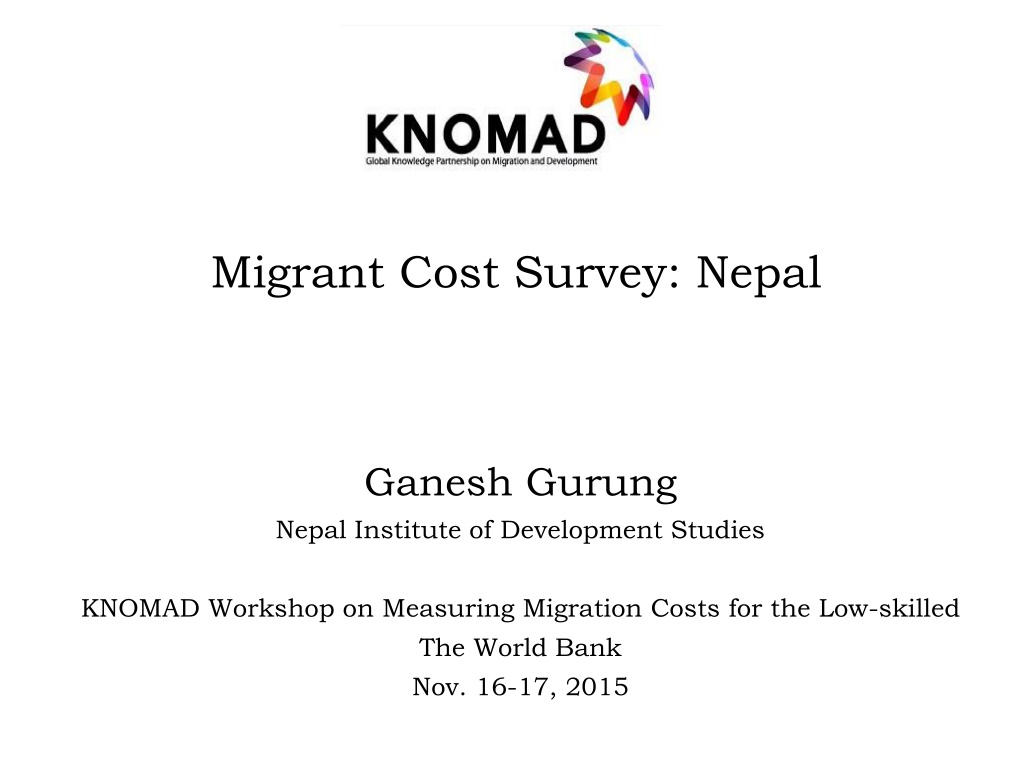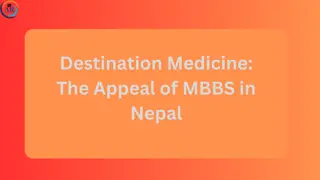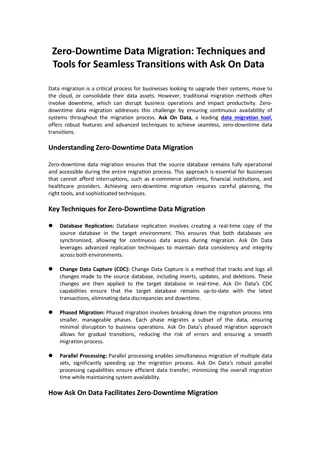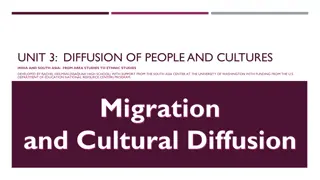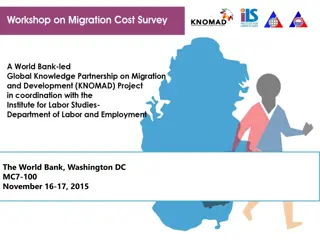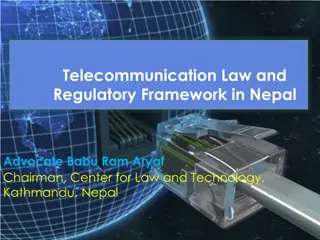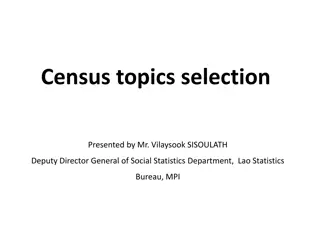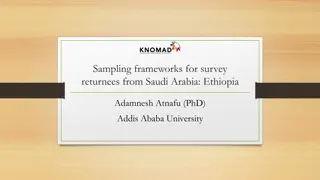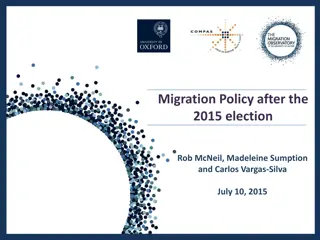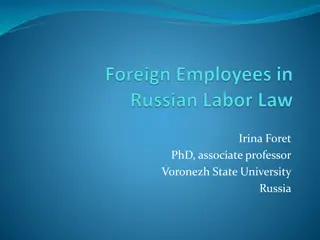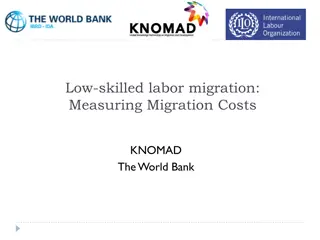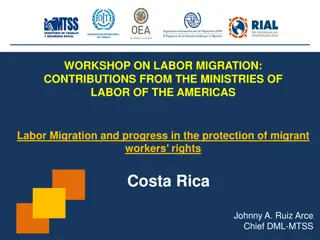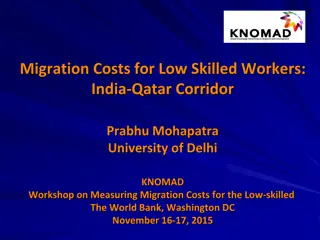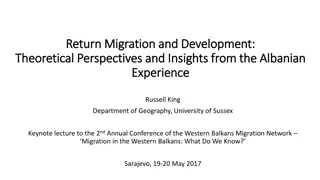Understanding Low-skilled Labor Migration in Nepal
Explore the framework and policies surrounding low-skilled labor migration in Nepal, including the Foreign Employment Act and Policy. Discover the historical context, challenges, and impact of labor migration on the Nepalese economy through remittances. Learn about the gender dynamics and geographic distribution of migrant workers in Nepal.
Download Presentation

Please find below an Image/Link to download the presentation.
The content on the website is provided AS IS for your information and personal use only. It may not be sold, licensed, or shared on other websites without obtaining consent from the author. Download presentation by click this link. If you encounter any issues during the download, it is possible that the publisher has removed the file from their server.
E N D
Presentation Transcript
Migrant Cost Survey: Nepal Ganesh Gurung Nepal Institute of Development Studies KNOMAD Workshop on Measuring Migration Costs for the Low-skilled The World Bank Nov. 16-17, 2015
Outline Labor migration regime Low-skilled labor migration in Nepal Sampling framework Challenges 2
Migration Framework Foreign Employment Policy (2012) Foreign Employment Act (2007) Foreign Employment Regulation (2007) amended in 2012 Foreign Employment Procedures (KARYABIDHI) 2007 Passport Act 2010 1. 2. 3. 4. 5. 3
Foreign Employment Policy 2012 Goal to ensure safe, organized, respectable, and reliable foreign employment to contribute to poverty reduction . Identify and promote employment opportunities in the international market. Make each step of the foreign employment process simple, transparent, organized and safe. Ensure good governance in the management of foreign employment. 4
Foreign Employment Act 2007 To control and facilitate the process of Nepalis seeking foreign employment. Provisions including Pre-departure orientation (mandatory) Labor Permit ( Exit approval) Creation of the Migrant Workers Welfare Fund (Rs.1000/head) A Labor Desk at the national airport. Recruiting agents fees are fixed. Medical Exams RECENTLY INCLUDED FREE VISA AND FREE TICKET 5
Labor migration mainly low-skilled labor A long history of labor migration (over 200 years). Massive outflows over the past few decades. in response to increasing demand of Nepalese workers from the Middle East. 1500 (Approximetely) outflows per day to the Middle East region and Malaysia. Excluding irregular migrants and those going to India. Resulting remittances Accounting for more than 25 percent of GDP. One in three households receive remittances.
Most migrant workers are males but female migration is rising. Number of labor permits issues, by gender (flows) 600 Thousands 500 400 300 200 100 0 2008/09 2009/10 2010/11 2011/12 2012/13 2013/14 Male Female 7Source: DoFE, 2014
About 40 percent of migrant workers are from southern border districts (green highlights). 8Source: DoFE: 2014
Small number of migrant workers are from the mountain districts (2008/09 - 2013/14). Region Mountain Hill Terai Total Total labor migrants 97,747 759,573 871,932 1,729,252 Share 5.7 43.9 50.4 100 Source : DoFe 2013/14
Half of migrant workers go to the Middle East and the other half to Malaysia (2008/09-2013/14) 2%3% 11% Malaysia Saudi Arabia Qatar UAE Kuwait Remaining Countries 41% 20% 23% Source: Labour Migration for Employment-A Status Report for Nepal: 2013/2014
The number of workers leaving for Qatar increased in recent years. 103850 85837 54732 44883 35943 25612 2008/09 2009/10 2010/11 2011/12 2012/13 2013/14 Source: Labour DoFE, 2014
Most workers secure their jobs through recruitment agencies, especially males. 600 Thousands 500 400 300 200 100 0 2008/09 2009/10 2010/11 2011/12 2012/13 Individual 2013/14 Total Via recruting agencies Source: Labour Migration for Employment-A Status Report for Nepal: 2013/2014
Recruitment agencies 744 agencies in operation in 2013/14. The foreign recruitment agent/ human resource officer of the destination countries hires Nepali recruitment agencies to recruit. The Nepali recruitment agencies in turn hires Kathmandu based recruitment agencies who hires a village agent to recruit migrant workers. The process of recruiting one migrant worker goes through several agents/ agencies. This is one of the main reason for high costs in recruitment practices. This survey will find out the actual cost of individual migration to Qatar thus, it will provide evidences for policy reforms. 13
2. Foreign Recruitment agent/ HR Officer 3. Indian Agent (Not all the time) 1. Employer 5. 4. Nepali Agent Kathmandu 6. Informal Agents in villages Representativ e Agent of Nepali RAs 7. Migrants 14
1. Employer 7. Migrants 15
Sampling framework to survey returnees from Qatar Implementation by step The first step of the CAPI survey was to get familiar with the questionnaires, to assess the airport areas, check the arrival/departure time for Qatar Airways, the average number of respondent per flight and the number of interviewers to be hired. We hired a total of 4 interviewers for the survey and was trained for one week. Meetings and focus group discussions were conducted in order to clarify any doubts about the using the interviewer app. Questionnaire was carefully reviewed in these session and doubts about it were also cleared.
Sampling framework to survey returnees from Qatar To minimize sampling bias, interception of returnees at the Kathmandu airport. Stratification: Returnees from Qatar. Worked in the low-skilled segments. Left Nepal in 2011 or later Focus group discussions 5 Focus group discussions held in Kathmandu. Some more FGDs will take place in the last of November.
Sampling Sample size: 350 (pre-determined) Gender balance: There were very few female respondents in the survey as most of the respondents were construction workers. Even though, the survey included domestic workers, we were only able to find mostly men. 18
Conducting surveys 4 interviewers conducted the survey. Respondent interceptions three times a day according to flight arrivals from Qatar. Interview places: At the airport arrivals or luggage claims: Offered the respondents with tea/snacks during the interviews. In a car: Offered car rides from the airport to their homes/hotels to increase our turnout ratio; conducting interviews during the ride. Switch from hiring an electric car owing to the petrol crisis. At Labor Village: For those whose interviews were incomplete. Obtained phone numbers and then followed up with respondents in the Labor Village of the Department of foreign employment, while in the queue to obtain their permit to go back to Qatar. 19
Success rates were Total number of people asked to identify qualifying respondents Number of interviews conducted Number of interviews approved (usable) Average duration of an interview Interviewer 1 82 45mins Interviewer 2 85 40mins Interviewer 3 86 45mins Interviewer 4 83 45mins Supervisor/ Interviewer 14 45mins Total 350 45mins 20
Challenges Significant delays in implementation owing to unforeseen disasters - the earthquake and the petro/diesel crisis. Difficult to convince respondents at airport Because most of the workers had paid in lump sum to the recruitment agents/ brokers, they did not know about the break downs of the payments. 21
Lesson Learned Identify an interview place where the respondents are not in a hurry to go home and can actually give more time for the interview. Any incentive mechanism to respondents (such as complains/story)
THANK YOU 23
Annual outflows of Nepalese workers steadily rising at about 20 percent a year over the past two decades (average, excluding those to India) 500 Thousands 450 400 350 300 250 200 150 100 50 0 Fiscal Year Source: DOFE (2014 )
Outline Labor migration regime Low-skilled labor migration in Nepal Sampling framework Challenges 25
